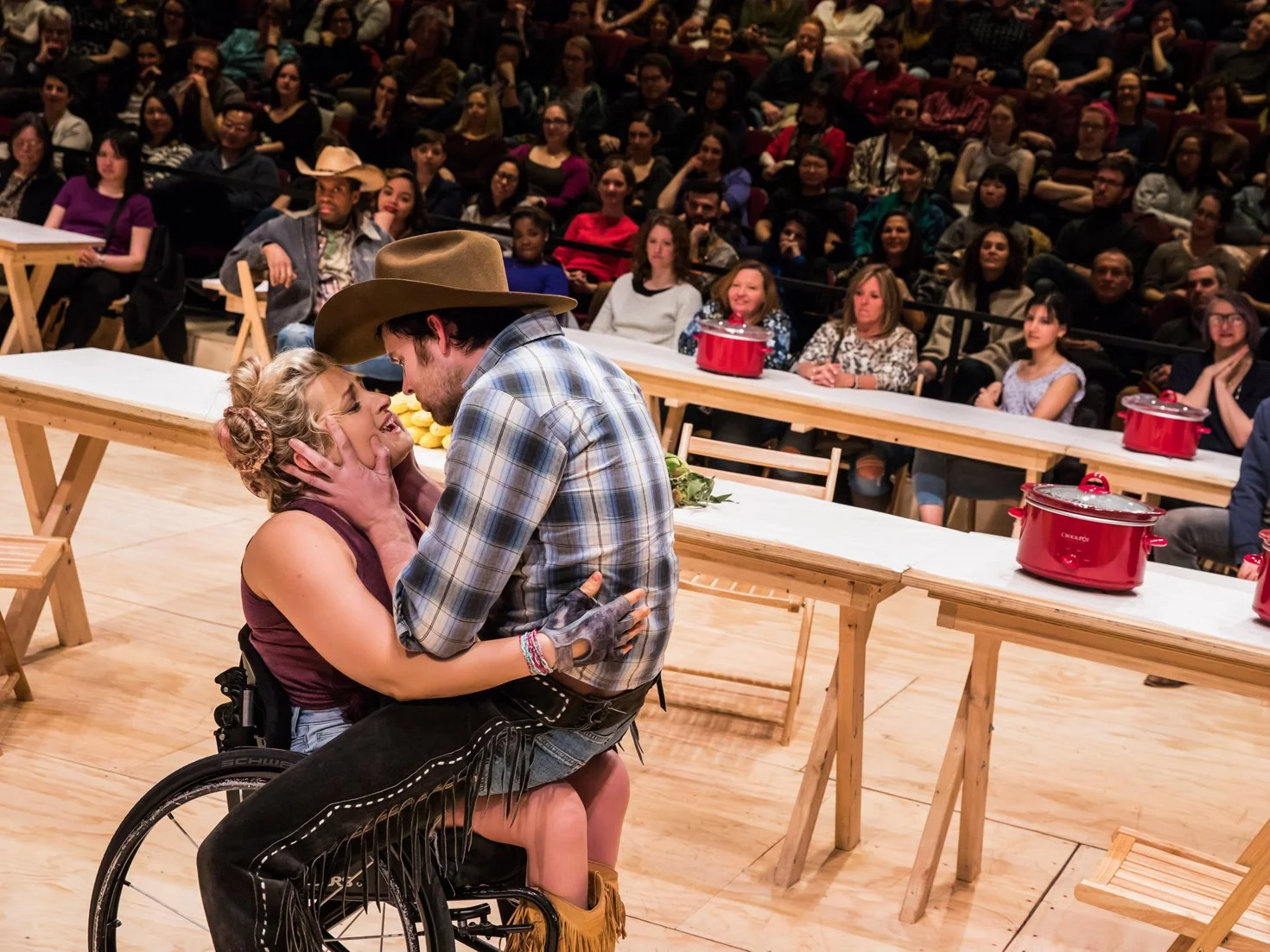Making Golden Age Shows for a Modern Audience
Ali Stroker & James Davis in "Oklahoma!" (Photo: Little Fang)
Nikki Scamuffo
When the average person thinks about musicals, they often think about musicals from the golden age, like Guys and Dolls, Oklahoma, My Fair Lady, or South Pacific to name a few. These musicals have maintained their popularity among musical theatre lovers and occasional theatre goers alike: they’re nostalgic, safe, and predictable. However, in today’s world, safe and predictable can also be exclusive and out of touch.
In the professional theatre world, there has been a trend of diversifying and reimagining classic golden age musicals. This comes with the national demand for more representation of minorities in all forms of media, as well as national shifts in ideals and expectations as a whole. Many of us want to see more diversity in all of its forms.
An example of this diversity was in the 2015 revival of Guys and Dolls in London’s West End theatre district. There, Rebel Wilson starred as Adelaide, one of musical theatre’s most iconic, sexy characters. Rebel Wilson was a nontraditional fit for the role, considering she is plus-sized. Adelaide is usually played by a thin, blonde, white dancer who is just old enough to have been engaged for fourteen years. Wilson gave new life to the role, and honestly, made the show more interesting since it’s something audiences had never seen before. Plus-sized women saw themselves in a role that didn’t center around her size, she was fun, sexy, strong, and independent. It gave the role new depth, and opened up many new possibilities for the classic show going forward.
Perhaps one of the most notable and groundbreaking examples of a reimagined golden age musical is the current revival of Oklahoma . In Daniel Fish’s most recent revival of the iconic musical, Laurey is played by Rebecca Naomi Jones, a black actress. This role is usually played by a young, white soprano. Jones will provide a totally new perspective of who Laurey is; a broader audience will also be able to see themselves in this classic musical. Another very non traditional casting choice in this production was actress Ali Stroker as Ado Annie. Stroker is an actress who uses a wheelchair, which is a completely new perspective on the role. Ado Annie is usually played as a very active, jumpy character who dances from man to man throughout the show. Stroker will be just as fun, bright, and witty as any Ado Annie ever was, just in a new and reimagined way.
What these two examples did, more than anything, was include a modern audience in shows that may have seemed untouchable. There is no rule that says every role has to be the same in every production of a show. Golden age musicals survive because they get reimagined for new audiences. If the theatre world wants these classics to remain relevant, they need to be relevant to modern theatre goers.
